Papyrus 62
Papyrus 62 (in the Gregory-Aland numbering), signed by 62, known also as ‘‘Papyrus Osloensis’’, is a copy of the New Testament and Septuagint in Greek-Coptic. It is a papyrus manuscript of the Gospel of Matthew and Book of Daniel. The manuscript palaeographically has been assigned to the 4th century.
| New Testament manuscript | |
| Name | Papyrus Osloensis 1661 |
|---|---|
| Text | Gospel of Matthew † |
| Date | 4th century |
| Script | Greek-Coptic |
| Found | Egypt |
| Now at | University of Oslo |
| Cite | L. Amundsen, Christian Papyri from the Oslo Collection, Symbolae Osloenses 24 (1945), pp. 121-147. |
| Size | 6.5 cm x 5.6 cm |
| Type | Alexandrian text-type |
| Category | II |
Description
The surviving text of Matthew are verses 11:25-30, they are in a fragmentary condition. It contains also fragments of Book of Daniel 3:51-53 and Odae (Papyrus 994 Rahlfs).[1] Survived fragments of 13 leaves.
The text is written in one column per page, 7 lines per column, 7-12 letters in line.[1]
- Greek
Matthew 11:25; 11:25; 11:25-26; 11:27; 11:27; 11:27-28; 11:28-29; 11:29-30; 11:30.
- Coptic
Matthew 11:25-29.[1]
The nomina sacra are written in an abbreviated way (θς, ις, κε, πρ, πηρ, υς).[1]
Greek text of Matthew
[25.] εν εκεινω τω καιρω̣ αποκριθεις̣ ειπεν ο [ι̅ς̅] ε̣[ξομολογο]υ[μαι] [σοι] [π̅ρ̅] κ̅[ε̅] [του] [ουρα]
νου και της γ̣η̣ς οτι εγρ̣υ̣ψας ταυ[τ]α̣ απο σο[φων] [και] [συ]ν̣[ετων] [και] απ[εκαλυψας]
αυτα νηπιοις [26.] ναι ο πη̅ρ οτι ουτως ευδοκι̣[α] –
[27.] παντα μοι παρεδοθη υπο̣ του π̣α̣τ̣[ρ]ο̣ς̣ μ̣ο̣υ̣ – [υι]
ον ει μη ο πατηρ ουδε το[ν] πατερα τ[ις] [ε]π̣ιγινω[σκει] –
αποκαλυψαι [28.] δ̣ε̣υτε προς μ̣ε παντε[ς] [οι] κοπιον̣[τες] – [αναπα]
υσω υμας [29.] α̣ρατε τον ζ̣υ̣[γο]ν μου εφ̣ [υμ]α̣ς̣ και μ̣α[θετε] – [τα]
πεινος τ̣η κ[αρ]δ̣ια και ευ[ρ]η̣σ̣ε̣τε αν̣[απα]υ̣σιν ταις – [30.] –
και τ̣ο φορτιον μου ελα̣[φρο]ν εστιν
The Greek text of the Gospel of Matthew is a representative of the Alexandrian text-type. Aland placed it in Category II.[2]
In Matthew 11:25 it reads εκρυψας along with Codex Sinaiticus, Vaticanus, Bezae, minuscule 33, lectionary 2211. Other manuscripts read απεκρυψας (C, L, W, Θ f1, f13, Byz).[3]
The text of Daniel represents Theodotion's recension.[1]
History
Leiv Amundsen dated the manuscript to the 4th century. INTF dated it to the 4th century.[2]
The manuscript was found in Egypt.
The text was published by Amundsen in 1945. It was examined by Maldfeld, Kurt Treu,[1] Karl Jaroš.[4]
It is cited in critical editions of the New Testament (NA26, NA27).
It is currently housed at the University of Oslo Library (Inv. 1661) in Oslo.[2][5]
Image gallery
 Mat 11.25-30 recto 1 3 5 7
Mat 11.25-30 recto 1 3 5 7 Mat 11.25-30 verso 18 20 22 24
Mat 11.25-30 verso 18 20 22 24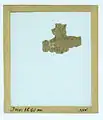 Mat 11.25-30 recto 25
Mat 11.25-30 recto 25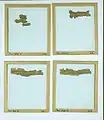 Mat 11.25-30 recto 17 19 21 23
Mat 11.25-30 recto 17 19 21 23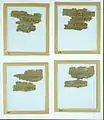 Mat 11.25-30 verso 10 12 14 16
Mat 11.25-30 verso 10 12 14 16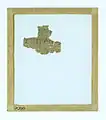 Mat 11.25-30 verso 26
Mat 11.25-30 verso 26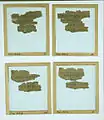 Mat 11.25-30 recto 9 11 13 15
Mat 11.25-30 recto 9 11 13 15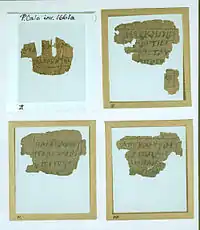 Mat 11.25-30 verso 2 4 6 8
Mat 11.25-30 verso 2 4 6 8
References
- Kurt Aland, Hans-Udo Rosenbaum, Repertorium der griechischen christlichen Papyri, Walter de Gruyter, 1976, p. 54.
- Aland, Kurt; Aland, Barbara (1995). The Text of the New Testament: An Introduction to the Critical Editions and to the Theory and Practice of Modern Textual Criticism. Erroll F. Rhodes (trans.). Grand Rapids: William B. Eerdmans Publishing Company. p. 100. ISBN 978-0-8028-4098-1.
- NA26, p; 28.
- LDAB
- "Liste Handschriften". Münster: Institute for New Testament Textual Research. Retrieved 7 April 2011.
Further reading
- Leiv Amundsen, Christian Papyri from the Oslo Collection, Symbolae Osloenses 24 (Oslo: 1945), pp. 121–147.